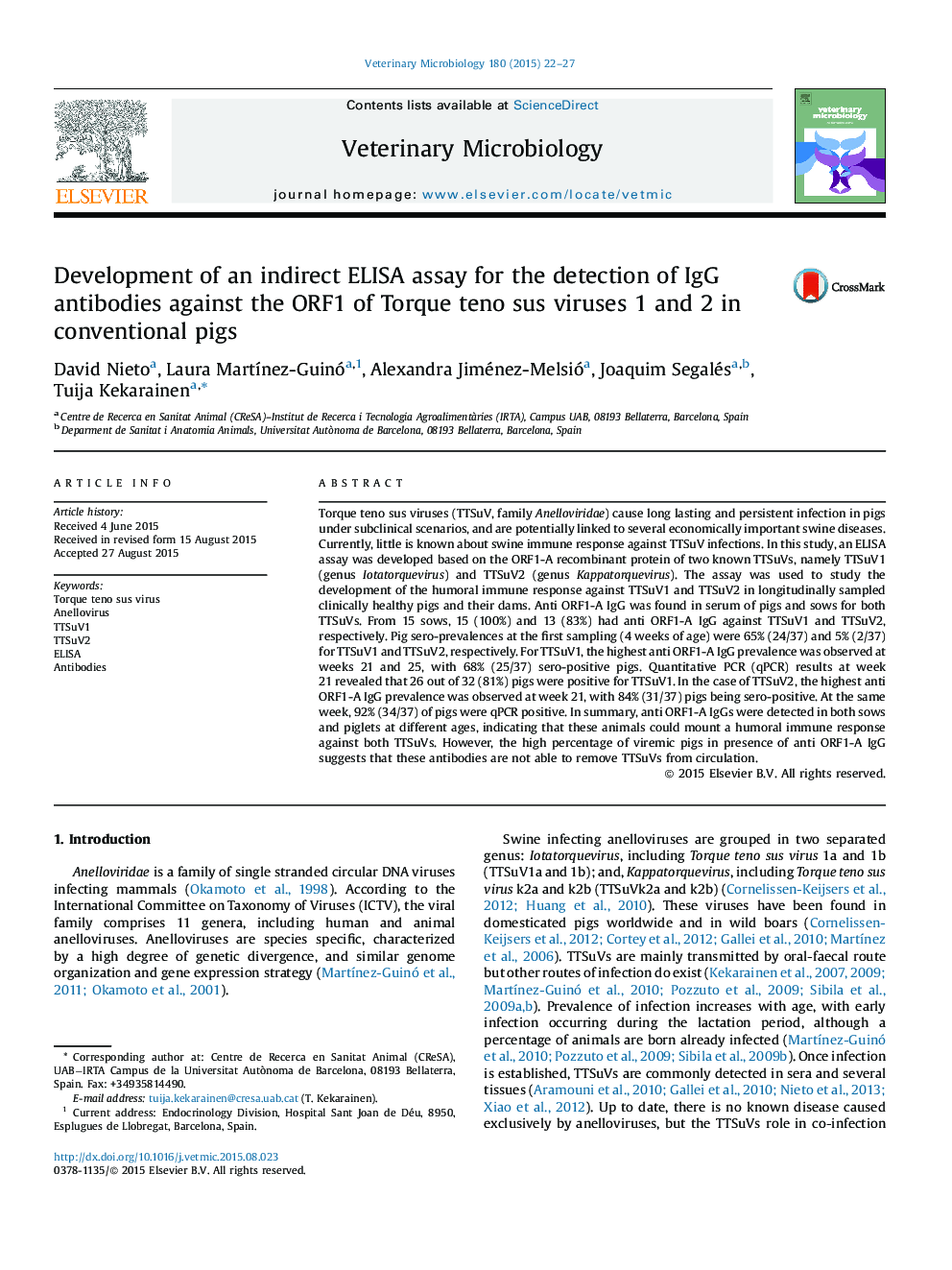| کد مقاله | کد نشریه | سال انتشار | مقاله انگلیسی | نسخه تمام متن |
|---|---|---|---|---|
| 2466525 | 1555345 | 2015 | 6 صفحه PDF | دانلود رایگان |

• The humoral immune response against TTSuVs infection was evaluated in pigs.
• A high percentage pigs were viremic despite of presence of anti ORF1-A IgGs.
• Anti ORF1-A IgGs are not clearing out virus from circulation.
• Presences of MDAs were detected against TTSuV1 and sparsely against TTSuV2.
• No cross reaction was observed between TTSuVs.
Torque teno sus viruses (TTSuV, family Anelloviridae) cause long lasting and persistent infection in pigs under subclinical scenarios, and are potentially linked to several economically important swine diseases. Currently, little is known about swine immune response against TTSuV infections. In this study, an ELISA assay was developed based on the ORF1-A recombinant protein of two known TTSuVs, namely TTSuV1 (genus Iotatorquevirus) and TTSuV2 (genus Kappatorquevirus). The assay was used to study the development of the humoral immune response against TTSuV1 and TTSuV2 in longitudinally sampled clinically healthy pigs and their dams. Anti ORF1-A IgG was found in serum of pigs and sows for both TTSuVs. From 15 sows, 15 (100%) and 13 (83%) had anti ORF1-A IgG against TTSuV1 and TTSuV2, respectively. Pig sero-prevalences at the first sampling (4 weeks of age) were 65% (24/37) and 5% (2/37) for TTSuV1 and TTSuV2, respectively. For TTSuV1, the highest anti ORF1-A IgG prevalence was observed at weeks 21 and 25, with 68% (25/37) sero-positive pigs. Quantitative PCR (qPCR) results at week 21 revealed that 26 out of 32 (81%) pigs were positive for TTSuV1. In the case of TTSuV2, the highest anti ORF1-A IgG prevalence was observed at week 21, with 84% (31/37) pigs being sero-positive. At the same week, 92% (34/37) of pigs were qPCR positive. In summary, anti ORF1-A IgGs were detected in both sows and piglets at different ages, indicating that these animals could mount a humoral immune response against both TTSuVs. However, the high percentage of viremic pigs in presence of anti ORF1-A IgG suggests that these antibodies are not able to remove TTSuVs from circulation.
Journal: Veterinary Microbiology - Volume 180, Issues 1–2, 22 October 2015, Pages 22–27